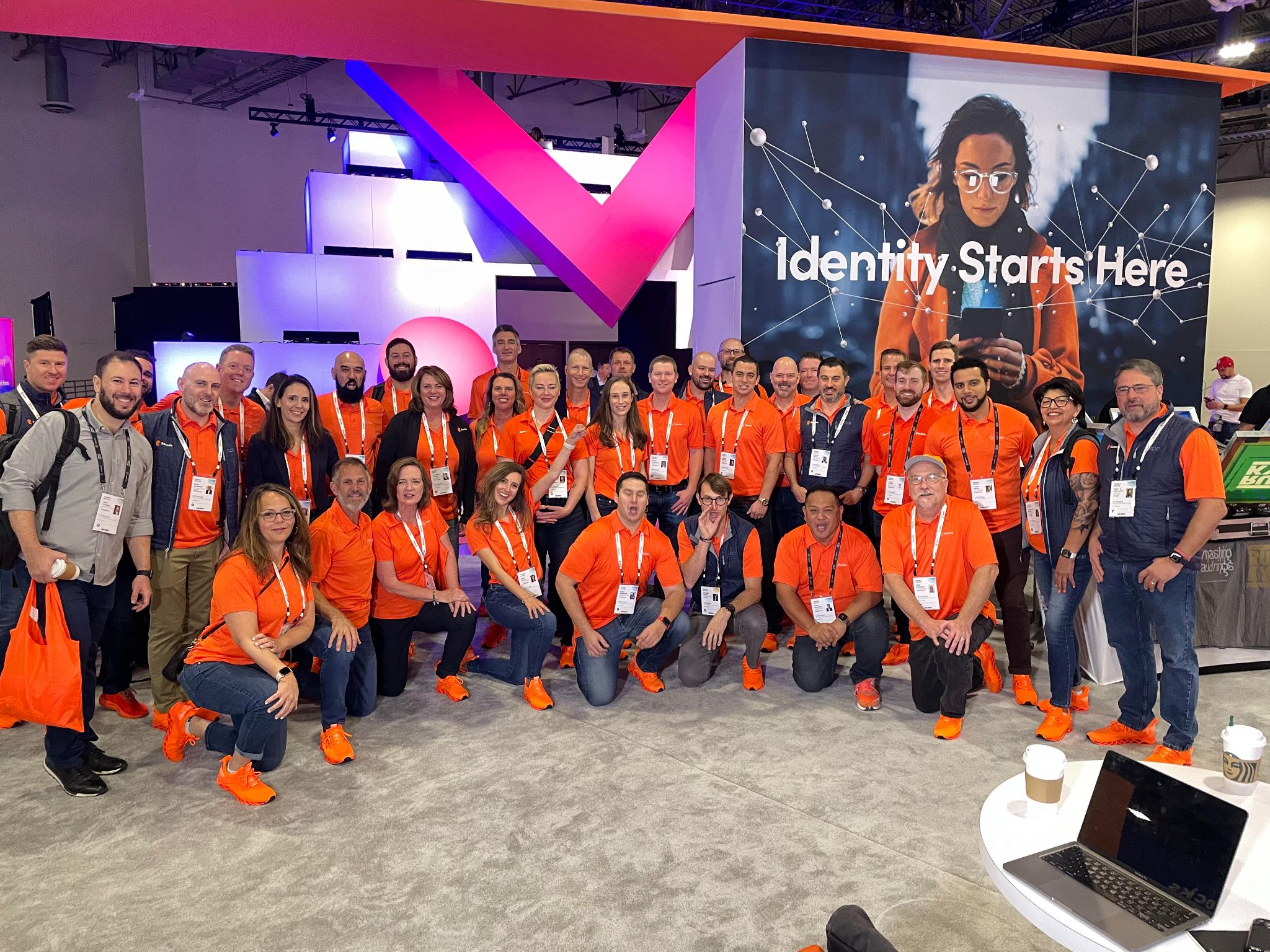True story: years ago, I had just landed in the third city in a week with my salesperson Ed, and I suddenly had to ask, “What airport are we in?” And neither one of us could recall, until we passed the Max and Erma’s, and said simultaneously, “Columbus.”
I fly. A lot. It’s a pain. Last week I flew to Money2020 in Las Vegas where I scheduled meetings from before-sundown to eating waffles the following 2 am. Next week I’m flying to New York, and then to San Diego (I think).
That’s why I got myself TSA Pre membership. Saves me lots of time fiddling with shoelaces and bags of liquids, and standing sideways in the scanner that’s probably causing me cancer. I can sleep in an extra twenty minutes before I head to the airport. Once there, I drop my bags on the belt, toss on my phone, and stroll through the X-ray that is, yes, probably causing me cancer.
It’s streamlined. It’s robotic. I cruise through that line. But it still requires brute force, in the form of all those people running those scanners, fingering through the bags that don’t look right, patting down the unfortunate souls who just keep setting off that lousy alarm.
The airports get clogged with all those poor slobs just trying to go see Grandma for Easter, or hoping to make that big meeting in Cleveland to land that giant deal. But here’s the really sad part. Sure, the awfulness of security (and turbulence, a different problem) keeps a lot of people out of airports. But for the most part, once you get there, you know you’re going through. The line looks horribly long? Well, you’re going to get in it anyway, because you need to reach the trade show, or that pre-paid package vacation at your timeshare in Orlando.
It’s different in the digital consumer world. If the website isn’t responsive, if you can’t figure out what the hell they’re asking for on that website, or if it just plain takes too long to register, you’re GOING TO BAIL. You’re going to say, screw these people, and you’re hitting the back button. Maybe you’ll click on the second or third link that came up in Google when you searched for “online bank”. Brute force still often comes into play in the form of manual review and other investigative efforts. What happened to “digital?”
Identity verification, identity proofing, whatever you call it, is the process wherein you enter your profile data, and the company you want to do business with checks that data to say whether or not they want to do business with you in return. If we were all created equal, meaning if you had the same stellar reputation and background as I do, you’d be sure to get that loan, that credit card, that seat at the table. But there’s so much noise. Great authors have to run the gauntlet of all those terrible manuscripts, submitted by illiterate morons, sitting on the desks of literary agents. Hiring managers have to wade through the CVs of the many lying under-achievers in order to find the hard-working gems. And applicants for loans or credit have to stand in the same line as the deadbeats and the just-plain-crooks.
Lenders and issuers have problems with trust, because the ground is littered with the flotsam of fraudsters. The unintended consequence of the extra scrutiny they have to employ is the tripwire of false positives. Legit supplicants end up in the same waste basket as the criminals all the time, owing to the thinness of their profile data, the fact that they’ve moved a couple of times in the last year, or in the case of people I know quite well, their neighborhood has been rezoned more than once even though they haven’t moved since, no kidding, 1962. Anybody who doesn’t measure up immediately and with flying colors falls into that bucket of out-of-wallet questions about maiden names and the model of one’s first car. Or worse.
At some customers, their original rate for dumping applicants to manual review or KBA was in the 33% range or worse. That’s unspeakable. They don’t want to lose those opportunities, which is great, but this comes at the cost of a lousy, time-consuming consumer experience, as well as, yeah, just plain cost.
Automation is the answer. Get those consumers onboard as fast as possible. The sooner they get in the door, the happier they’ll be, the more business they’ll do, and the faster the revenue flows. But automation is more than just having a robot make the choice. Said robot must make the correct choice. This means being able to recognize a good applicant when he shows up. It also means recognizing the perpetrators, before they can perpetrate.
This is what we do at Socure. Our mission statement is to “identify the human race”. This has required us to build what we call robots that ingest ungodly amounts of data, millions of known outcomes consisting of known goods and bads. We know what an honest applicant looks like. Likewise, we know what fraud smells like. Because our models have trained on these millions of examples, and generated predictors that measure the quality of the PII elements, the names and addresses and phones and emails and SSNs and you name it, and make the most accurate decisions possible.
This isn’t binary matching. By knowing the patterns, and applying our advanced predictive analytics, Socure swats away those fake identities at one end, and lays down the welcome mat for the real ones at the other end, automatically. Consumers get onboard and fuel the revenue process quickly when they’re auto-accepted.
How did these amazing fraud-sniffing models come into existence? Our brilliant data science team started with data and their own genius to build the first foundation, then created a machine-learning robot to learn, and keep learning, so that the whole process just gets smarter and smarter. Our accuracy in auto-accepting applicants, and capturing fraud in the remaining population, outdoes anything by any competitor, or any assembly line of point solutions. You want it automatic, with little or no brute force. You want it self-documenting, provable, and able to self-improve over time.
This is what we were able to show to literally hundreds of attendees at Money2020 last week. Thanks to everybody who came to our booth, the prospects and customers who came to our opening night event and our Tuesday cocktail party, my hard-working colleagues who manned the booth and meetings, and those genius data scientists who have made this whole thing possible.
I don’t build it. I just talk about it. And hey, write about it.

Jeff Scheidel
Jeff Scheidel is a technologist with 38 years in software, including 26 years in security solution design. He is the author of numerous white papers on security and regulatory compliance, as well as a McGraw-Hill book on identity, access, database, and application protection. Jeff is an expert on compliance requirements across a number of industries, and has presented at a wide variety of security events.


















